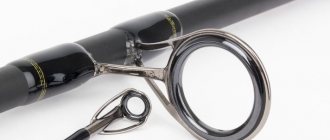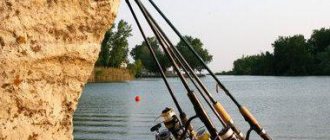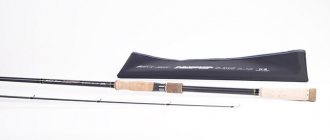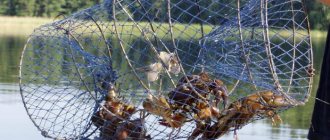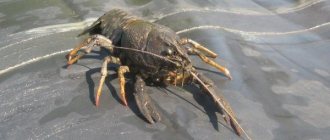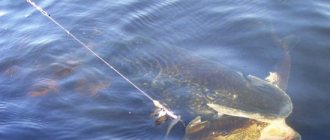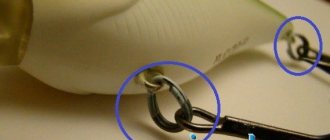People have been catching crayfish since ancient times. And in the Middle Ages they were even used for medicinal purposes: the ashes from these representatives of the order of decapods burned alive helped against the bites of snakes, rabid dogs and scorpions. Aesculapians prescribed boiled crayfish, for example, during treatment for exhaustion.
Back in the sixteenth century, the Swedish royal court praised the taste of crayfish. The peasants caught them and delivered them to the houses of the nobility, but they themselves treated this “shell-shelled beast” with a degree of distrust.
general information
Crayfish are quite whimsical to their living conditions. The body of water in which they can exist must be fresh, since they do not reproduce in a salty environment. In addition, crayfish are sensitive to pollution, but if the living conditions around them are favorable, then they can be found in a variety of places - lakes, oxbow lakes and streams. However, most often they are still found in rivers.
Crayfish are twilight inhabitants of water bodies. Their intensive feeding period occurs after sunset or at dawn, although in cloudy weather they also eat during the day. To search for food, they can crawl ashore, remaining there for several hours. Crayfish feed on aquatic vegetation - shoots of pondweed, water buckwheat, etc. But for normal development, these arthropods also need animal food. Therefore, they eat mollusks, mosquitoes, caddis fly larvae, tadpoles, sick or dead fish, frogs, etc.
Seasonal habits of crayfish
The mustachioed inhabitants of the underwater world prefer clean water reaches enriched with lime. Favorite habitats are freshwater rivers, lakes, streams and oxbow lakes, where there is no strong current. They do not reproduce in salt and fresh-salt water. If the water in the pond becomes polluted, after some time the owners of the claws and shell disappear from it forever.
Crayfish most often make their homes in the coastal zone, inhabiting places near large banks with cliffs (where it is easiest for them to dig holes). Being hermits by way of life, they hide in such shelters from relatives and hunters. Each cancer has its own personal refuge and practically does not change its place of residence. You need to remember this when going on a search.
Crayfish can be lured out at any time of the year, with the exception of January and February - in deep winter they prefer to hole up in their burrows. The arrival of spring is not very conducive to successful catching of these representatives of the aquatic world - they are just waking up from hibernation. But sometimes pleasant exceptions happen.
May-June is a special period for those with claws - they molt, shedding their old shell and taking care of procreation. During this period, a strict fishing ban is introduced, as they become completely defenseless.
From July (in different regions and reservoirs these dates may be pushed in one direction or another, because conditions in the Kuban and Ladoga are noticeably different), arthropods begin an active search for food, quickly migrating along the bottom.
At night and early in the morning, they annoy fishermen by eating baits on hooks.
In September, crayfish rush to leave their burrows in search of food, but they gain special taste qualities in late autumn, so it is at this time that their catch is considered the most productive.
Catching crayfish in October is not too difficult and very exciting. If you know the places and features of successful catches, you can always count on luck. In autumn, arthropods begin their breeding season, which requires abundant nutrition and frequent forays into shallow water in search of food. The ability to choose the right tackle will help you catch rich catches.
There are many ways to catch crayfish:
- hand fishing;
- fishing with a float or special fishing rod;
- use of clamshells and other devices.
Catching by hand is considered the most primitive of all methods, but in October-December this method of catching is not only uncomfortable, but also harmful to health due to the low water temperature.
It is much more convenient at this time to try to catch the hermits with a fishing rod. To do this, use either ordinary float equipment, attaching not one, but three hooks to the fishing line (additional ones reduce the likelihood of prey getting lost), or a special fishing rod.
When a crayfish bite occurs, the float slowly and with an incline goes under the water. As soon as it sinks to depth, it is necessary to quickly raise the tackle without cutting or letting go of the line.
Whether the cunning inhabitants of the underwater world will peck and be caught depends on the knowledge and skill of the fisherman.
There is nothing complicated about a special fishing rod - a small fish, shellfish or frog is placed on a wire (the point of a stick) and tied to a fishing line on a long rod. For reliability, the bait is wrapped in a nylon stocking or other net, and as soon as the crayfish catches on it, it is quickly hooked. To keep the gatherings to a minimum, it is advisable to place a net near you and use it in time.
Fishing with net baskets is a fairly common and effective method. This device consists of a wire frame, metal mesh and reliable rope. The upper part of the trap is made narrower - this way the crayfish will not be able to crawl out once they get inside it.
The principle of the device is quite simple: the crayfish crawls into it in search of food, but due to the design features, it cannot get back out to freedom.
The trap allows you to catch not just one crustacean at a time, but a lot of prey and is an effective and inexpensive means for hunting arthropods.
Open traps
According to their design, shells are divided into two types: open and closed. The first ones are the simplest in design, appearance and manufacture. Any fisherman who decides to try his luck in catching crayfish can build one.
In appearance, the device resembles a colander and consists of a frame in the shape of a square or circle, on which a strong metal mesh is attached.
A rope is tied to the top of the structure, with the help of which the crayfish is lowered into the water and pulled back.
We suggest you read: How to make a fishing rod for crucian carp
Closed traps
Open traps are difficult to transport due to their size, so many fishermen use closed-type devices, which are more effective, but difficult to manufacture.
It’s not so easy to design them yourself; it’s easier to buy them in a store or market.
The most popular in this category is the crayfish inkwell, which folds conveniently and is easy to transport.
The place where the tackle is immersed is marked with a circle of thick foam (you can also use an empty but closed plastic bottle), tying it to a rope.
If several devices are used simultaneously, they must be installed at a distance of at least 10 meters from each other. You can check whether the crayfish are entangled in the equipment after 2-3 hours.
The quantity and quality of the catch depend on the food used, and what to use to catch crayfish in crayfish traps is up to each angler to decide for himself. In most cases, arthropods prefer food of animal origin, willingly picking up from the bottom everything that has ceased to live. But even among carrion they look for the freshest food.
To force the hermit to eat bait on a fishing rod or in a crayfish trap, they use small fish, worms, frogs, bird (animal) meat, slugs, grasshoppers, and mollusks that live in the reservoir. The best bait for crayfish in a crayfish trap is the food to which they are directly accustomed.
On spring days, those with claws and shells give preference to small fish (crucian carp, perch, goby, roach). It is desirable that the bait be “scented”. In summer, crayfish have no problem finding food at the bottom, but they can be interested in rotten offal (offal, liver, stomach).
After the end of summer, the appetite of arthropods becomes simply brutal. With the first cold weather, you can attract them by even getting them interested in ordinary black bread with the addition of chopped garlic.
Such bait must be well wrapped in gauze, otherwise the crumb will become limp and will no longer attract crayfish even as ordinary bait.
In order to successfully catch and not leave the water field empty-handed, you need to properly secure your bait in the trap.
You can secure any bait tightly either with an elastic band or using wire - there are many options, just don’t just put it on the bottom of the fishing device.
Having decided on the fishing method and how to seduce the arthropod’s food receptors, it is necessary to take into account the conditions and characteristics of the reservoir in which the crayfish live. They can be found in the following places:
- in a creek with reeds;
- on a reservoir with a rocky bottom;
- on a pond with shellfish;
- on a sandy bottom;
- in cancer burrows;
- in backwaters with logs and roots;
- in cans and bottles.
It is believed that backwaters with reeds growing in them are of little use for swimming and fishing, but the clumsy barbels really like them. Here they are perfectly camouflaged, which makes detecting them quite problematic; in addition, thickets of reeds complicate the fishing process.
Quiet pools with logs and tree roots are both attractive and dangerous, especially if the water is murky. Experienced crayfish hunters claim that it is in such places that large trophy specimens can be found - mostly old, sedentary arthropods with dark brown shells. Young crayfish prefer other places.
Reservoirs with a rocky bottom create excellent conditions for shelter, allowing crayfish to hide in case of danger.
If you take them out of such places with your hands, you need to grab them by the whiskers protruding from the hole (grabbing the arthropod by the claw, you can only get it, and the crayfish itself will remain in the shelter).
Pitfalls are fraught with danger for the catcher, since you can get bruised, wounded or broken fingers.
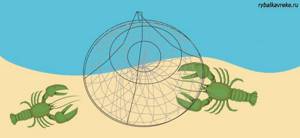
Hermits like to set up their homes in those reservoirs, the bottom of which is covered with shells and small parts of reeds. Crayfish feel quite comfortable among mollusk colonies and willingly set up their burrows there. It is even easier to detect and catch crayfish in ponds and river creeks with a sandy bottom. The water in them is usually clean, and only the utmost attention of the angler is required.
Knowing about the presence of crayfish burrows in the coastal zone, arthropod hunters should also remember that muskrats and water rats choose the same places for their homes.
By confusing a crustacean's hole with a rodent's home, you can seriously injure your hands. To prevent this from happening, you should remember that crayfish dig out dwellings up to 5 centimeters high and no more than 8 centimeters wide. They do not live in large burrows.
Often, crayfish don’t particularly bother setting up their secluded places, crawling into empty cans and bottles that people throw into the water. It is not difficult to get arthropods from such dwellings - you need to lift a tin can or glass bottle, pointing it towards you with the hole. It is difficult for crustaceans to crawl out, and they become easy prey.
Catching crayfish at night in the fall is one of the most interesting activities. At this time of year (especially in November), the water cools down greatly and warms up only during the day in shallow water; frosts accompany the night. Crayfish go to places where the water is much warmer in the dark to warm up and feed. If you take this circumstance into account, you can catch a lot of arthropods virtually at the water's edge.
We suggest you familiarize yourself with: Catching roach with a float rod, searching for and baiting a suitable place
In order not to leave the reservoir empty-handed, it is advisable to go for crayfish in two or three, stretched out in a chain. It is necessary to stock up on a good flashlight, which can be used to illuminate the water column.
The presence of crayfish will be revealed by their eyes - under the beam of a flashlight in the darkness of the night they will glow ruby. The second of the participants in the “expedition” can easily pick up the red-eyed fish with a net and either put it in the bag themselves, or give the opportunity to a third person to collect the prey.
When to catch crayfish?
The fishing season for these arthropods begins in July and lasts until the end of the second autumn month. Catching crayfish in September depends on the weather and water temperature. From the second half of the month, the amount of production begins to decline.
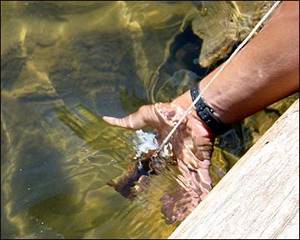
Towards the end of October, crayfish meat changes its taste, and its shell gradually hardens. If it was warm in May and June and the water temperature remained high, then the molting of these arthropods ends before the onset of the hunting season. And then from the beginning of July the catches are good. But if the summer was cold and the molting was late, then the crayfish will begin to move only from the end of July, after the shell has completely hardened.
Time and choice of place for catching crayfish
Taking into account the lifestyle of crustaceans, the most successful time for fishing can be considered the night, when the crayfish feel most safe and come out of their holes in search of food. Crayfish are also active at dawn.
The optimal time for successfully catching crayfish is from 10 pm to 3-30 am.
Crayfish fishing by season:
- January February . Fishing is not very effective, because... crayfish sit in holes, leaving them reluctantly and only occasionally.
- March – May . Crayfish are emerging from their winter torpor, but there is no point in hoping for a large catch.
- May June . Crayfish molt and spawn. Catching them is prohibited in most regions.
- July August . Crustaceans lead a full active lifestyle. You can count on successful fishing.
- September October . In female crayfish, the process of egg formation begins.
- November December . The crayfish practically stop reacting to bait; they have filled up their reserves for the winter, and the females have future offspring under their shells. Fishing is not very effective.
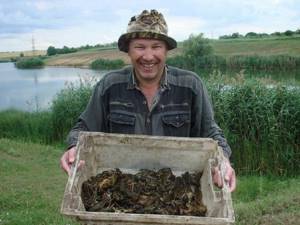
The most productive time for catching crayfish is late summer - early autumn
The dates are approximate, they depend on the climatic conditions of each individual region
For crayfish in September
The weather greatly affects this type of “hunting”. It is easier to catch these arthropods on a cloudy or rainy day than on a clear day. That's why many people believe that catching crayfish in the fall is the most fruitful. But in windy and very bad weather, in a thunderstorm or rainstorm, it is better not to go to the reservoir, since it is unlikely that you will be able to return home with the spoils.
Crayfish fishing in September occurs at a depth ranging from thirty centimeters to a meter. The burrows of these reservoir inhabitants are not too difficult to find. They can occupy any depression between stones or snags. But only adult individuals can be found there; it is better to look for young animals in shallow water.
What bait should I use to catch crayfish?
Correctly selected bait is a guarantee of a rich catch. But what and how to cook it from is a question that interests everyone who is going to catch crayfish.
There is no consensus on which bait is most effective for catching crayfish. Almost every angler believes that his bait is the best.
Therefore, you can experiment in this matter in order to eventually find your own unique bait.
However, there are several most common rules that most crayfish lovers resort to:
- Bait made from fresh fish is still much better than bait made from rotten fish. Although many people have different opinions on this matter. Crayfish is great for fish such as bream, roach, and silver bream.
- With the fish you can put a little dill, oil cake, and also a piece of rye bread crust rubbed with garlic in a small bag.
- In addition to fish meat, chicken, frog or grasshoppers are also used.
- Various small shellfish that live in this area can attract cancer just as well as meat.
The list of bait used is endless, since crayfish is considered an omnivore. Therefore, in this case, the bait is the complete imagination of the crayfisher and his personal experience, as well as the advice of friends.
Autumn fishing tricks
Many experienced crayfish fishermen go to the reservoir in the late afternoon to go out hunting for prey after dark. The easiest way to catch crayfish in the fall is with a flashlight. This is the simplest and most unpretentious method, in which the only gear is a “beam of light.” Actually, the hunt itself takes place as follows: one of the fishermen illuminates the bottom of the reservoir with a powerful spotlight, and the other walks nearby and uses a net to collect prey in a cage. This fall crayfish fishing is very similar to picking mushrooms after rain. Often, the prey crawls ashore on its own, where it can be easily collected without any effort.
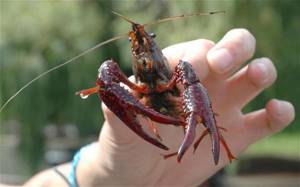
However, such unpretentious at first glance, catching crayfish in the fall has its limitations: the water in the reservoir should be as clear as possible. Only in this case will the flashlight be able to illuminate a sufficiently large area. This “collection” of prey occurs at a distance of two to three meters from the shore.
The easiest autumn fishing method
The only equipment required is a fairly powerful spotlight to illuminate the bottom, a net to pull arthropods out of the water, and, of course, a bag or cage in which to put the prey.
This kind of crayfish fishing in the fall is most effective if two or three people participate in it. At the same time, certain requirements are imposed on such equipment for catching crayfish as a net. Its length must be at least two meters. You need to take as light a stick as possible as a basis. The latter characteristic is required in order to be able to capture the crayfish along with the surrounding silt or part of the clay bottom, reducing the likelihood of its escape.
Where to fish?
Crayfish, as is known, are found only in clean water bodies. If a lake or river is heavily polluted or not rich in oxygen, then going there for these arthropods is a waste of time. At the same time, the best places for catching crayfish are those in which the water stagnates faster.
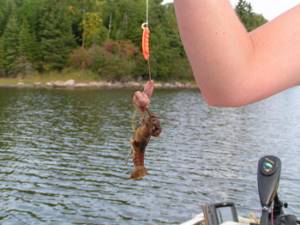
These underwater inhabitants are found at different depths: in some lakes and rivers you can catch crayfish by going into the water up to your knees or a little higher, while in others you have to look for them at a depth of up to three meters.
These arthropods are big fans of rocky bottoms, where they find numerous hiding places. They can often be found in reservoirs with clay soil. Here they dig burrows under the shady steep banks. But in shallow places where there is a hard sandy bottom, it is impossible to find them. These underwater inhabitants cannot tolerate reservoirs with muddy or densely overgrown algae bases.
Features of catching crayfish using a crayfish trap
Although catching crayfish using a crayfish is ridiculously simple, this process has its own characteristics that a good crayfish fisher must know:
- To find out where more crayfish are found in a pond, it is better to place them in places with different depths for the first time.
- Place the shells no closer than 10 meters from each other, but no more than 30 meters.
- Since it is better to catch crayfish at night, you will therefore need a flashlight, because in the dark you will not see anything. It is better to use an LED flashlight that is mounted on your head. This way your hands will be free and visibility will be good.
- You can use a piece of foam plastic as a float, painting it in a bright color.
- As for making the shell itself, it will not take much time and will also require minimal costs.
- After the crayfish is caught, it must be stored in water, or better yet in the same body of water. We must not forget to feed it, otherwise the crayfish will start eating each other out of hunger.
- It is necessary to cook the crayfish while it is still alive. A sufficient amount of salt and dill is added for taste. Then the crayfish turns out aromatic and quite salty.
Catching crayfish, no matter with your hands, with a crayfish catcher or with a fishing rod, is always an extremely exciting activity that requires intelligence, perseverance and a little endurance.
During fishing, a kind of excitement appears, which is stronger even than when fishing or hunting.
To make the process of catching crayfish only enjoyable, you need to follow the tips indicated above, and then nothing can ruin your fishing. And at the end there will definitely be a long-awaited reward - juicy boiled red crayfish.
Methods of catching crayfish
These arthropods can be caught in a variety of ways. This can be either catching crayfish by hand, or using special inventions for this type of hunting. Many fishermen do not understand, and therefore ignore, catching these arthropods, believing that there is no excitement or sporting interest in it. However, those who have at least once felt the pleasure of catching them will never miss the opportunity to get pleasure again.

The most common methods of catching crayfish are:
- hands;
- crayfish traps;
- fishing rod;
- by borders.
All of them are catchable and are not considered poaching.
Where do crayfish spend the winter?
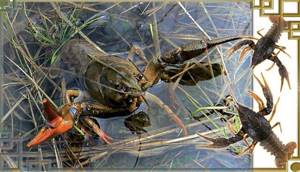
Crayfish spend the winter in burrows. They bury themselves completely to a depth of 2-3 meters, leaving a small hole. It is difficult to detect them at the bottom, since they spend most of the day in hibernation and go out to get food for 2-3 hours. And the famous expression “I’ll show you where the crayfish spend the winter!” poses a threat only because in the old days serfs were sent to catch crayfish and they wandered in icy water in their underwear, looking for a delicacy.
By the way, now is the time to catch crayfish: the water is clear and not cold yet, so good luck and bon appetit!
Catch without equipment
Catching crayfish with your hands is the most primitive and ancient method. The catcher, moving carefully in the water, looks under stones or tree trunks, under which these arthropods hide during the daytime. Having noticed the prey, he quickly grabs it so that it does not hide or run away. Of course, this method of catching crayfish is not suitable for those who are afraid of sharp claws. The largest “harvest” can be gained at night, when crayfish emerging from their shelters are easily collected by illuminating the bottom of the reservoir with a lantern.
You can grab them with your hands only when the depth of the river or lake is no more than one and a half meters. For deeper places, so-called “pincers” are used. This wooden device for catching crayfish makes it easy to catch and lift prey from the water. The pincers are from one to three meters long, and so that they do not damage the catch, they are made hollow.
A simpler equipment is considered to be a long stick, at the end of which there is a split, expanded with the help of a small pebble or wooden block. With such a device it is impossible to pull the crayfish out of the water; it is only used to press it to the bottom and only then remove it with your hand. Fishing with ticks requires quite a bit of skill, since these arthropods only seem to be slow. But as soon as they sense danger, they run away very quickly.
Angling

Cancer grabs onto her and holds on tightly. And the hunter just has to catch it with a net and pull it out of the water. Catching crayfish with a fishing rod differs from fishing for fish in that it does not use hooks, so the prey can come unhooked at any time. In this case, the gear is made primitively and simply: a fishing line is tied to a two-meter stick, and bait is tied to it. The end of the fishing rod is secured: this can be done by sticking it into the bottom of a lake or river near the shore. The catcher can use several gears at the same time.
The baits attract crayfish in standing water over an area of about ten square meters. Therefore, you should not place fishing rods frequently. It is better to stick the gear on the coastline at a distance of five or seven meters from each other.
All evening and at night, depending on the intensity of the zhora, the fishing rods need to be checked periodically, sometimes even four times in an hour. The catching area should not exceed two hundred meters in length, so that it is convenient for the hunter to check the fishing rods in time, so that the crayfish do not have time to eat the bait and leave. If during one evening the catch goes down, then it is better to move to a new place.
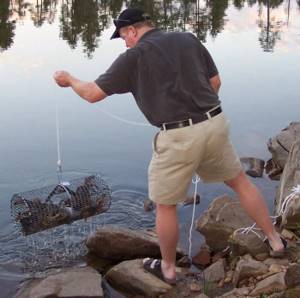
When checking the fishing rod, you need to carefully pull it out, slowly and smoothly lift it so that the crustacean that has grabbed onto the bait does not unhook, but is pulled together with it to the surface. Then the fisherman carefully picks up the prey with a net lowered into the water from below.
How to catch crayfish at night in autumn
One of the favorite ways of catching crayfish among fishermen is to hunt them on an autumn night with a flashlight and a net. At this time of year, quite significant temperature changes occur, when frosts often occur at night, and daytime heat is enough for the upper water layers to warm up a little. Therefore, at night, crayfish crawl to the shore of the reservoir, where the water is much warmer, to warm up or feed. As a rule, this season for night catching crayfish lasts from the first days of September until the start of freeze-up. Although such hunting is not available on every body of water, and not every one of them is suitable for this. Usually, crayfish are waited near fairly deep places so that they crawl out to the very edge of the shore, where they are often taken directly with their hands. At this time, at night the air cools to such an extent that wet hands literally freeze on it, but the water is warm enough to warm them up. That is why crayfish crawl to the shore, into warm water layers. It is better to hunt crayfish on an autumn night with two or three of them, moving along the shore in a chain. One must go with a flashlight and, shining a beam through the water column, find crayfish, which betray their presence with glowing red eyes. The second should follow and pull out the prey with a net, and the third should carry it in a bag. A net for night hunting for crayfish must be made of a strong pole so that it can withstand and not break when scooping the prey ashore. In order for the fishing to be successful, the crayfish should be covered with a net from above, drowned a little in the silt, and scooped ashore with it, so the prey has practically no chance of escaping. The handle of the net should be approximately 2-2.5 meters, no more, since crayfish are usually located a meter or two from the shore. It is better not to reach for those individuals that will be located further than this distance, since due to the large thickness of water it will not be possible to quickly cover the crayfish, and it, sensing danger in the form of an approaching net, will simply leave.
Catching crayfish in the reeds in autumn
Almost every body of water has places where reeds grow. This place is good for catching crayfish because people usually don’t swim there and don’t scare the crayfish. In such places, catching crayfish is good, although it is difficult with the reeds themselves.
The tactics for catching crayfish in the reeds in the fall are simple. Slowly swim along the reeds and look carefully at the bottom, as it can be difficult to notice crayfish there due to the fact that they are well camouflaged in the reeds.
Precautions when catching crayfish in reeds. Swim carefully in or near reeds to avoid cutting yourself or becoming entangled.
Catching crayfish in autumn in quiet creeks with snags and tree roots
Catching crayfish here is a pleasure, but you need to take into account that if you don’t know what the bottom is, then it’s better not to go there at all, especially if the water is cloudy.
Tactics for catching crayfish in autumn in creeks with snags. Don't make any sudden movements, but catch the crayfish with confidence. From my own experience, I know that such places are usually inhabited by large old crayfish, whose shell is dark brown. Such crayfish are slow and for an experienced fisherman it is not difficult to catch them. There are exceptions in the form of young crayfish in such places, but this is rare.
Precautions when catching crayfish in creeks with snags. If you still decide to catch crayfish in snags, then carefully examine the bottom, without sudden movements, etc.
Catching crayfish on a rocky bottom in autumn
Where there is a rocky bottom, there are a lot of natural holes for crayfish, which like to hide in them in case of danger.
Tactics for catching crayfish in the fall on a rocky bottom. Do not grab crayfish by the protruding claws from their burrows, since there is a high chance that your trophy will only be the claw itself; rather, grab them by the whiskers - the crayfish always sticks them out, even after an unsuccessful attempt to get it. Raise the stone above the hole, but be careful not to stir up the water and thus lose sight of the crayfish, who, in turn, will have time to escape to another place.
Precautions when catching crayfish on a rocky bottom in the fall. You should not put your hands in the holes - this action can injure your hand on the crayfish. There were cases when large stones crushed the hands of catchers, and the matter ended with bruises and broken fingers.
Catching crayfish in autumn in a shell rock
The bottom in such places is completely strewn with remnants of reeds and entire colonies of river mollusks. Cancers are frequent guests in such places.
Tactics for catching crayfish in the fall in a shell shell. We swim slowly and carefully examine the bottom, since crayfish can simply camouflage themselves in colonies of mollusks and remnants of reeds.
Precautions when catching crayfish in the fall in shell beds. Be careful when catching crayfish in such places - you can easily cut yourself on the shells of the mollusks. Standing with unprotected feet in such places is also not recommended.
Catching crayfish on a sandy bottom in autumn
Perhaps the most ideal place for all crayfish fishermen, both beginners and experienced. The bottom is clean, the sand is fine and the water practically does not muddy. In such places you can often find the dark green hornwort plant, but not in large quantities.
Tactics for catching crayfish on a sandy bottom. We swim and look from side to side, since visibility is good and crayfish can be seen perfectly at a decent distance.
Precautions when catching crayfish on a sandy bottom in the fall. No matter how safe the place is, always be careful; even on such sandstones, catchers managed to get injured. Sandstone, although safe, is still...
Catching crayfish in burrows in autumn
A separate topic for conversation. Or, if I may say so, a complete precaution. If you come across a place where a depth of 2-3 meters sharply begins immediately from the shore, then when you dive, you may find a hole in front of you, or even more than one. Remember, crayfish are rare in such holes, and the holes belong to muskrats. NEVER put your fingers in there unless you want to get seriously injured.
If crayfish make holes for themselves, they are small ones - depending on the size of the crayfish, the hole can be 4-5 cm in height and 7-8 cm in width.
Catching crayfish in autumn in bottles and cans
Favorite places for crayfish are broken bottles with the bottom or neck intact and tin cans (for example, from stewed meat). You can find such goodness in almost any body of water. Most cans and bottles, as a rule, are not empty - they contain crayfish. Tactics for catching crayfish. If you see a can (bottle), you lift it with the open part towards you. Cancer will not have time to escape, since he runs away “backward”, and behind his “back” is a dead end. You shake the crayfish out of its shelter either directly underwater, or surface and pull out the crayfish. If the jar (bottle) is empty, then throw it deeper into the water, leave it in place, just put it so that no one is injured, or pull this container ashore.
Precautions when catching crayfish. Be careful not to cut yourself on the sharp edges of the jar (bottle).
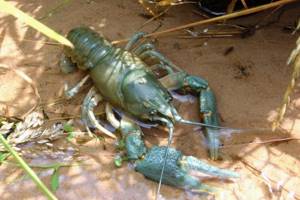
Most often, to catch crayfish in the fall, they set up the usual crayfish traps - metal cages and bait (usually live fish). The cancer crawls into the trap along the inclined wall and begins to eat easy prey, but cannot quickly get out. You just need to check the crayfish trap regularly. Crayfish are also caught using a fishing rod. You can make this simple tool yourself. Attach a bait to a stick pointed at one end and equip the rod with fishing line. It is best to use a frog or small fish as bait. Such bait must be wrapped in a net or nylon stocking. Having noticed the bait, the cancer will try to grab it as tightly as possible, and when this happens, you can safely pull out the prey. Cancer is a very clean creature, and the assumption that it feeds on dead fish or drowned animals is completely wrong. Cancer will never eat rotten meat or fish. Its food is exclusively grass, algae, larvae, mollusks and small fish. The best time to catch crayfish is from 10 pm to 3 am. But sometimes crayfish hunt in the pre-dawn hours, and this is also worth taking into account. Some crayfish hunters note that prey can always be lured. To do this, you need to light a fire on the shore, and if you are fishing from a boat, then take a lantern with you. Arthropods really love such illumination and actually run to the bait.
Traps
Today, crayfish are widely used to catch crayfish - cylindrical nets stretched over a round metal hoop. The latter is most often made of galvanized wire. Its most common diameter is fifty centimeters. To avoid skewing the hoop, three or four thin cords of equal length should be tied to the hoop at the same distance. They are connected by one common knot, into the loop of which a stronger rope is threaded for raising and lowering the gear. When fishing from the shore, the end of the cord is attached to a pole.
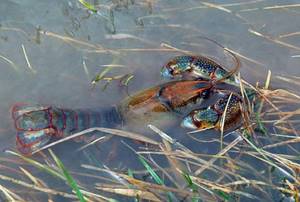
The bait is tied to the net on a cord stretched across the diameter of the hoop. The trap then sinks to the bottom. The cord for lifting the crayfish is tied to a buoy or pole fixed to the bank slope. This type of fishing is based on the following: prey that clings to the bait no longer has a chance to get out. You need to lift the crayfish quickly, without hesitating.

You can hunt with several ranches at once. Typically, traps are placed at a depth of one to three meters.
Fishing with crayfish
Shells can be open or closed. Closed crayfish traps are considered more effective.
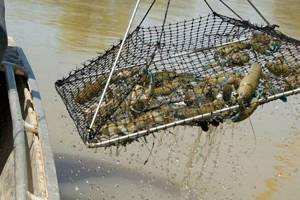
One of the variations of crayfish
Some tips about crayfish traps:
- The most effective are crayfish traps that have a cylindrical shape. Square and rectangular shells can be difficult to use because... cling to rocks and other underwater obstacles.
- The optimal size of the shell is 90 cm on either side.
- The bait in the crayfish trap should be well secured to the hook.
- It is best to bring the crayfish to the fishing point on a boat, because When installing from shore, various types of problems may arise.
- To make it easier to find the crayfish, you need to attach a piece of foam plastic, a plastic bottle to a cord, or use a cord to tie it to a stick, which you place on the shore.
Step-by-step technique for catching crayfish:
- The crayfish bait should be secured in the center of the trap;
- Carefully the crayfish sinks to the bottom;
- If there are several traps, then the distance between them is at least 10 meters:
- You can get the crayfish trap out within three hours; ideally, the traps are set for the whole night.
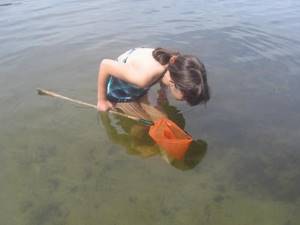
You can even catch crayfish using a regular net
Lures
Crayfish eat almost anything: worms, corn, but are especially well caught on rotten meat or fish. This means that it is advisable to use the same rotten meat for luring. Canned peas also attract crayfish well.
Those who are going to fish with traps can simply pour a can of these legumes into cheesecloth, tie it up and attach it to the crayfish trap. If there are arthropods in the reservoir, they will definitely smell the bait.
Experienced crayfish fishermen advise using makukha or black bread for this purpose. It’s interesting, but in different bodies of water, crayfish react differently to identical bait.
What bait to choose for catching crayfish in a crayfish trap?
Fishermen divide types of bait by season:
- During the spring season, it is best to use fish . This can be either a small whole fish or a fillet purchased in a store. It is necessary to make several cuts in the fish so that it emits an attractive smell;
- Meat can be used in summer . Pieces of liver or other offal also work well;
- In winter and autumn , you can also use fish and meat , only stale ones. It’s a good idea to lure crayfish on bread wrapped in cheesecloth.
Crayfish are carnivores, so they are attracted to animal foods rather than plant foods.
Since they are scavengers, they consume fish and other river inhabitants that have died and began to emit a corresponding smell. Taking this into account, they can be attracted to products that are not the first freshness, but it is worth noting that it is impossible to attract arthropods to outright rot and rotten products. Moreover, if he has a fresher alternative, he will choose it.
Therefore, you need to choose a carcass of an animal or fish that is fairly fresh and cut it to spread the smell. You can let it lie in the sun for a short period of time.
Borodino bread rubbed with garlic to create an attractive smell for crayfish . Cancer hears this smell from afar and can come to him.
You can also use worms, grasshoppers, clams and frogs .


